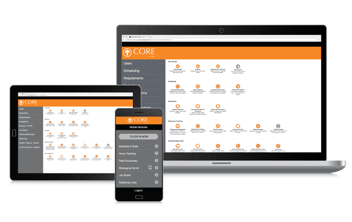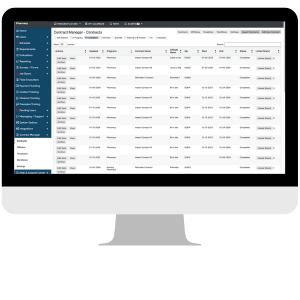In this blog post, we'll delve into the complexities that clinical and experiential education program staff face in the process of collecting preceptor availability and explore strategic solutions to overcome these hurdles. Join us as we embark on a journey to streamline the placement process and ensure quality student experiences.
Throughout this blog post, we primarily use the term "preceptor" to describe the pivotal role individuals play in guiding and mentoring students, particularly in clinical education. However, we acknowledge that terminology may vary across different educational contexts. Depending on the program or institution, "preceptor" may be interchangeable with titles such as supervisor, instructor, or host teacher. Therefore, while we consistently use "preceptor" in this post, we encourage readers to interpret it in a manner that best suits their educational context as the challenges and best practices we discuss are applicable among various program types.
As the academic year approaches the crucial time for collecting preceptor availability within your program's established timeline, the coordination of schedules between preceptors and students can present formidable challenges.
It's important to note that the pressing issue of preceptor shortages deserves a separate discussion of its own. In this post, our focus is on the hurdles and effective strategies for gathering availability from the preceptors already committed to your program.
Identifying the challenges in collecting preceptor availability
When managing preceptor availability, clinical education staff face several challenges that can impact the efficiency and effectiveness of the process:
Preceptor Burnout Prevention: The well-being of preceptors is paramount, and clinical coordinators should ensure they do not contribute to preceptor burnout. How can program staff effectively balance their multitude of responsibilities while also staying attuned to each preceptor's student placement preferences and ensuring that opportunities align with educational objectives? Prioritizing well-being is crucial for sustaining a healthy preceptorship program.
Manual Communication and Data Entry: A significant challenge for program staff is the manual communication required with each preceptor to gather availability information. This often involves extensive back-and-forth communication via email or phone calls. Additionally, clinical coordinators must manually enter this information into systems, spreadsheets, or log it on paper, adding to the administrative burden.
Management of Data Volume: As mentioned above, program staff, such as clinical coordinators, must manage a considerable amount of data related to preceptor availability. This includes directing data into the appropriate program or rotation types, as well as specific rotation dates. The complexity of this task can lead to human error or oversight, impacting student placement and program operations.
Dynamic Nature of Scheduling: Another challenge is the dynamic nature of scheduling. Since the initial submission of availability, schedules may change due to unforeseen circumstances or personal life events. Coordinators must adapt to these changes and ensure accurate and up-to-date availability information.
Utilizing technology solutions to overcome these common challenges
When it's time to conduct your annual availability request, leverage a communication tool to efficiently reach all preceptors with one message. For example, CORE's ELMS messaging center streamlines data collection while reducing the administrative workload of individual email outreach. Leveraging features such as the messaging center enables program staff to send out to all their preceptors at once versus sending emails out one by one.
Program staff can also create templates in the messaging center to reuse for each academic year.
Example:
"We look forward to having you serve as a preceptor for the 20XX academic year. We are collecting availability with a deadline of [DATE]. Please follow the link within this email to complete your submission. Thank you for your help in supporting [Institution Name] [Program Name]."
With CORE, the message would appear in each preceptor's inbox, as shown here. The preceptor isn't required to sign in to the portal to submit their availability. They can simply click the link and enter the required information within minutes.
In addition to giving preceptors an easy way to enter their availability, CORE ELMS's settings allow preceptors to easily confirm or deny their schedule once it's been created, mitigating the need for extensive back-and-forth email communication. This not only saves time but also reduces the risk of errors associated with manual data entry.
Managing the considerable amount of data related to preceptor availability requires efficient data organization and processing. By utilizing technology solutions like ELMS, program staff can centralize preceptor availability data and streamline the allocation process. You gain the ability to request the maximum number of students for a given academic year within the scheduling module. Additionally, ELMS workflows such as having administrators approve the preceptor's submissions ensure data accuracy and integrity, minimizing the risk of oversights or errors.
To adapt to the dynamic nature of scheduling, program staff can provide their preceptors with accessible and user-friendly tools to effectively manage scheduling changes and minimize disruptions to student placements.
In conclusion, by implementing these strategic solutions, experiential education program staff can overcome the challenges associated with collecting preceptor availability and foster a supportive environment that promotes preceptor engagement and well-being. Through effective communication, streamlined processes, and leveraging technology solutions, program staff can optimize the preceptorship experience for both preceptors and students.
CORE Higher Education Group
Author




